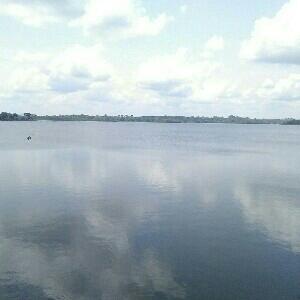Read in
View of the Kafiné hydro-agricultural dam
Niakara, August 31, 2022 (AIP) – The Kafiné hydro-agricultural dam (Hambol region) has a fishing potential which remains untapped to date by the local populations, noted the AIP on site, Tuesday August 30, 2022.
The Kafiné hydro-agricultural dam, located 18 kilometers southwest of the town of Niakara, is a gigantic artificial lake ecosystem. It was created in 1981 by the Ivorian government to boost the sugar production of Marabadiassa at the time, thanks to the support of the European Economic Community (EEC), now European Union (EU).
Thus, it is a treasure for rice growing, the agricultural operators of Kafiné being specialists in the production of this cereal and is an adequate response to the question of resilience in the face of the challenge of climate change with its adverse effects on agriculture.
“This vast body of water of more than 15 million cubic meters, without aquatic plants or islands of dead wood in appearance, has allowed the granting of 750 hectares of cultivable land downstream to the local populations”, indicated a resident. of Kafiné, Gbélé Koné, adding that the fish farming of this dam still escapes the inhabitants of the locality, for lack of skills in the matter.
According to a rice farmer in Kafiné, Maurice Hilnan, in the face of galloping demography, with its corollary of unemployment and insufficient cultivable land, the training and equipment of young people for the exploitation of the halieutic potential of this large dam, remains a an unavoidable alternative which both national and local policies should tackle.
The populations of Niakara believe that alongside the local initiatives underway in rice growing, fishing and even fish farming must be highlighted in the government’s strategy for food security in Côte d’Ivoire, in general and particularly in the region. du Hambol and hence, in the department of Niakara.
(AIP) jbm/ad/fmo



